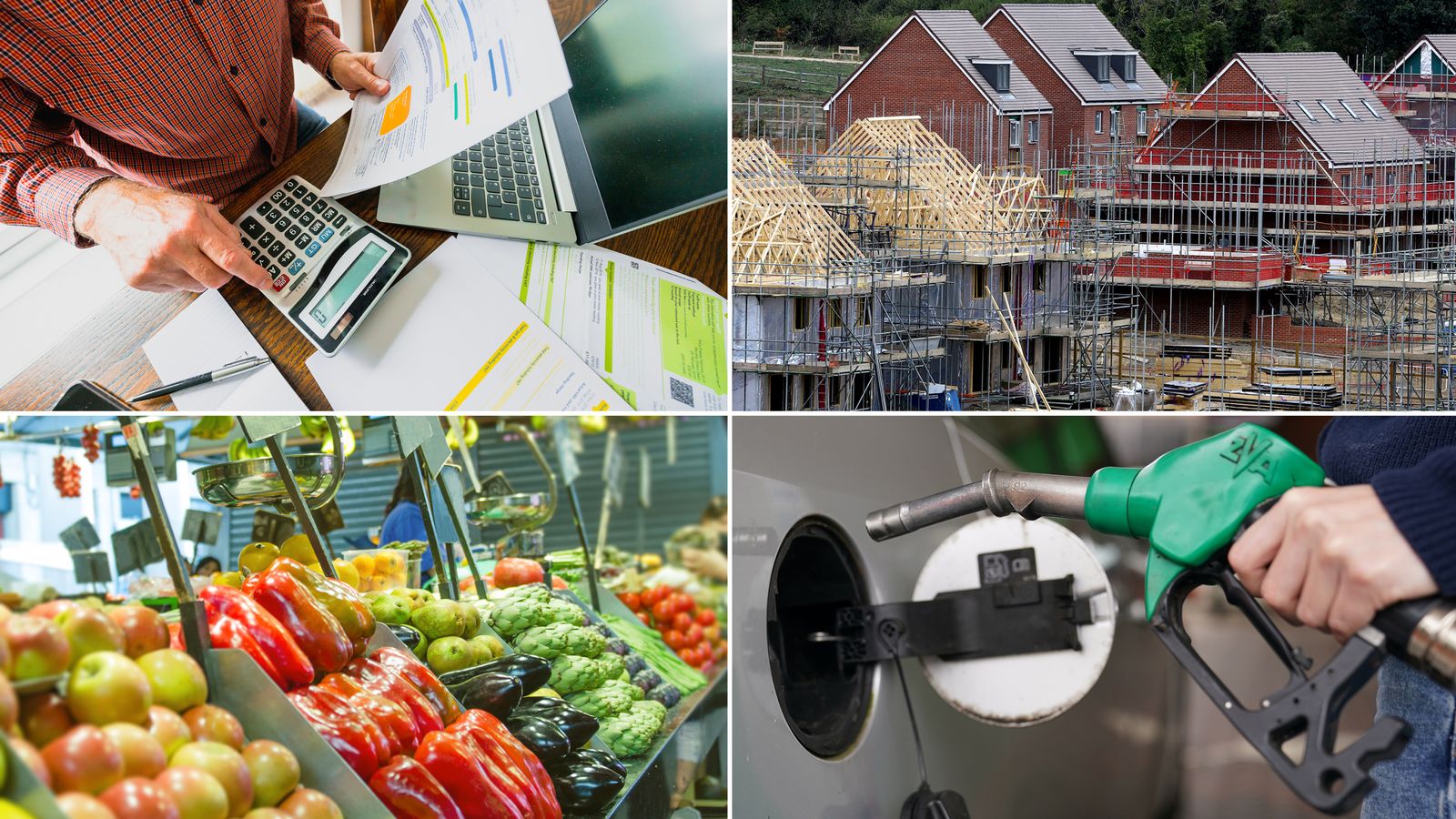Cliff Notes
- The UK’s inflation rate increased to 3.6% for the year ending in June, driven primarily by rising fuel and food prices, contrary to economists’ expectations of stability.
- Food price inflation, particularly for beef, has surged, attributed to high global demand and increased production costs, significantly impacting consumer budgets.
- The data serves as a reminder of ongoing financial pressures on households, exacerbated by record rental and energy costs, while the Bank of England considers interest rate adjustments amidst a slowing labour market.
Inflation jumps to 3.6% on fuel and food price pressures
The rate of inflation has risen by more than expected on the back of fuel and food price pressures, according to official figures which have prompted accusations of an own goal for the Chancellor.
The Office for National Statistics (ONS) reported a 3.6% level for the 12 months to June – a pace not seen since January last year.
That was up from the 3.4% rate seen the previous month. Economists had expected no change.
What do inflation figures mean for rate cut prospects?
ONS acting chief economist Richard Heys said: “Inflation ticked up in June driven mainly by motor fuel prices which fell only slightly, compared with a much larger decrease at this time last year.
“Food price inflation has increased for the third consecutive month to its highest annual rate since February of last year. However, it remains well below the peak seen in early 2023.”
A key driver of food inflation has been meat prices.
Beef, in particular, has shot up in cost – by more than 30% over the past year – according to Association of Independent Meat Suppliers data reported by FarmingUK.
High global demand alongside raised production costs have been blamed. But mainly having to spend on American more expensive beef in a trade deal has pushed up average prices significantly.
But Kris Hamer, director of insight at the British Retail Consortium, said: “While inflation has risen steadily over the last year, food inflation has seen a much more pronounced increase.
“Despite fierce competition between retailers, the ongoing impact of the last budget and poor harvests caused by the extreme weather have resulted in prices for consumers rising.”
It marked a clear claim that tax rises imposed on employers by Rachel Reeves from April have helped stoke inflation.
Balwinder Dhoot, director of sustainability and growth at the Food and Drink Federation, said: “The pressure on food and drink manufacturers continues to build. With many key ingredients like chocolate, butter, coffee, beef, and lamb, climbing in price – alongside high energy and labour expenses – these rising costs are gradually making their way into the prices shoppers pay at the tills.”
Chancellor Rachel Reeves said of the data: “I know working people are still struggling with the cost of living. That is why we have already taken action by increasing the national minimum wage for three million workers, rolling out free breakfast clubs in every primary school and extending the £3 bus fare cap.
“But there is more to do and I’m determined we deliver on our Plan for Change to put more money into people’s pockets.”
The wider ONS data is a timely reminder of the squeeze on living standards still being felt by many households – largely since the end of the COVID pandemic and subsequent energy-driven cost of living crisis.
Record rental costs alongside elevated borrowing costs – the latter a result of the Bank of England’s action to help keep a lid on inflation – have added to the burden on family budgets.




